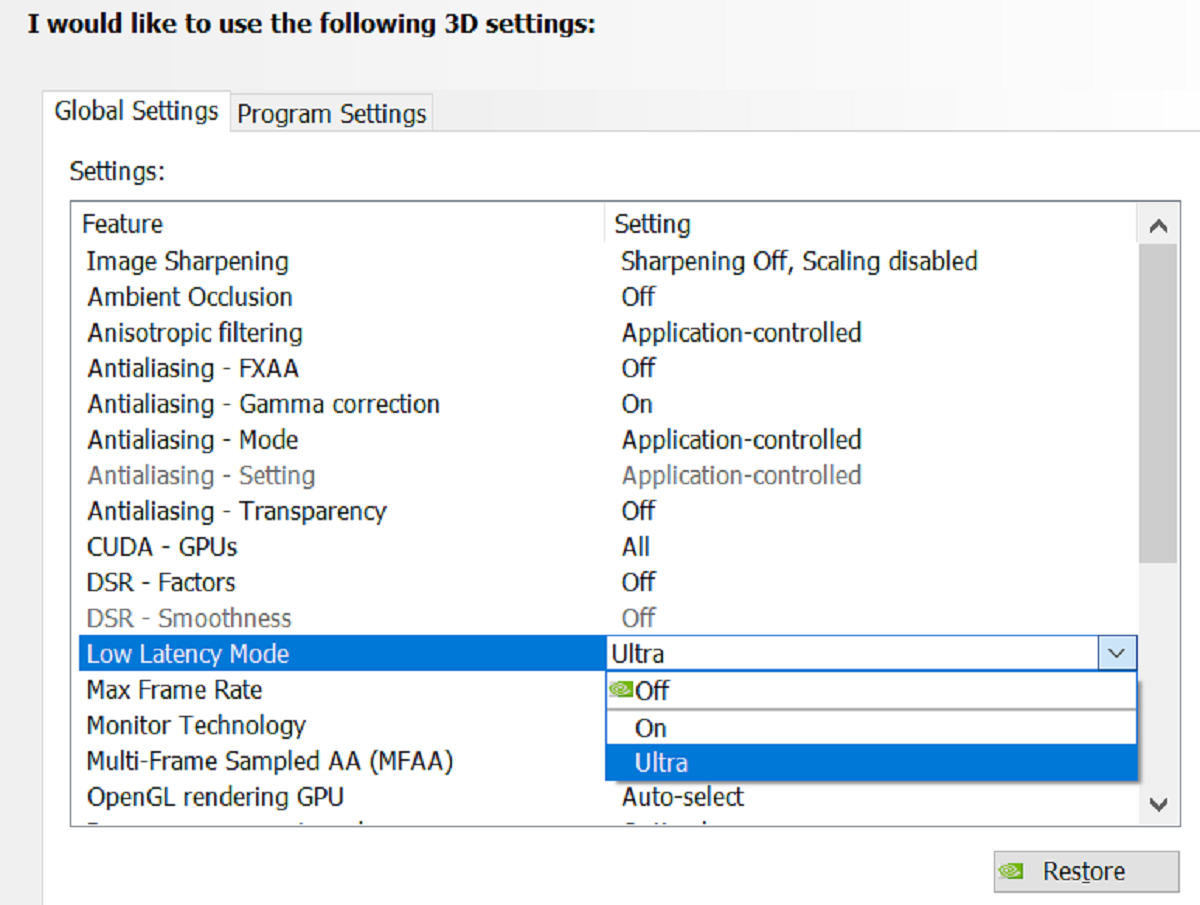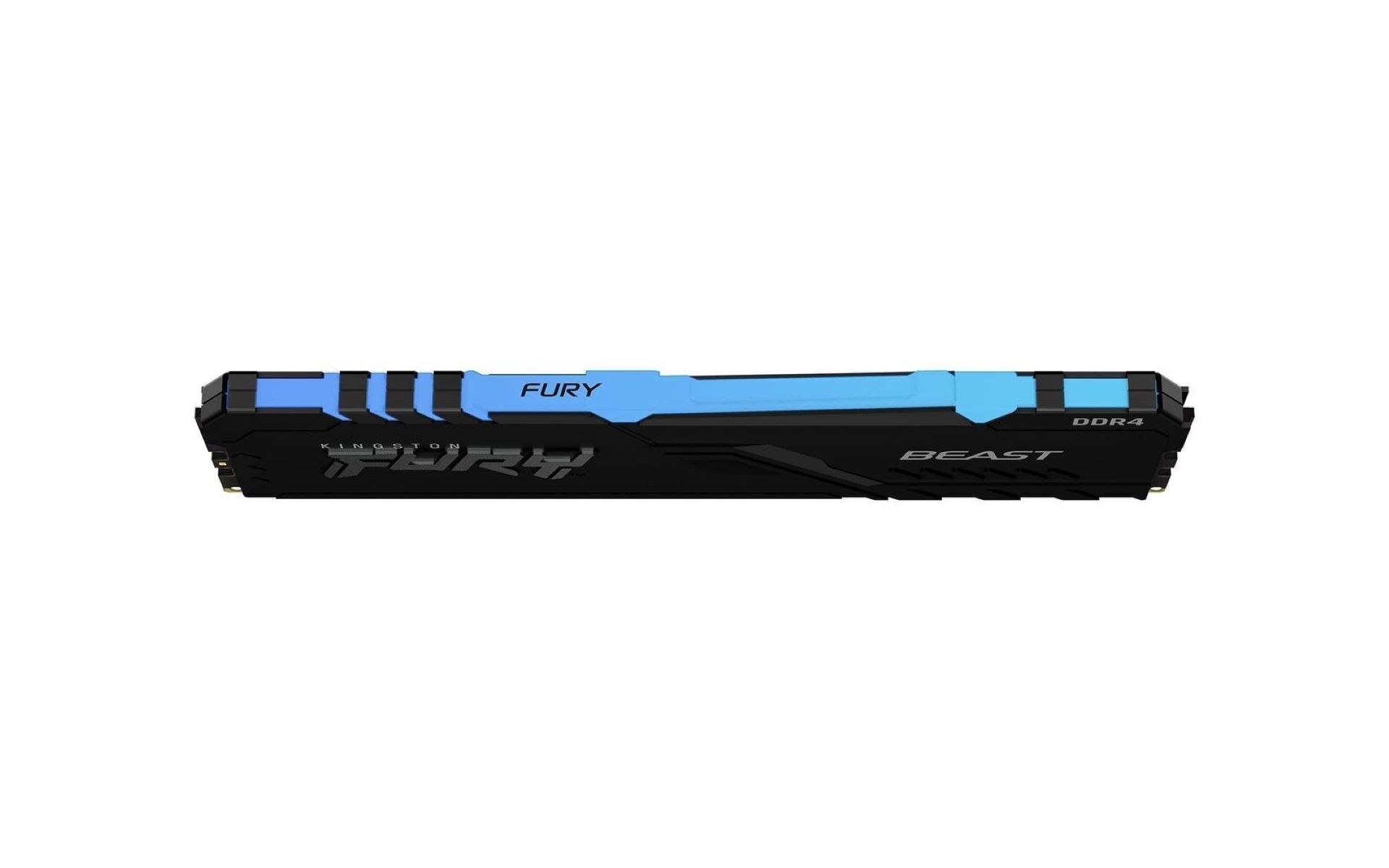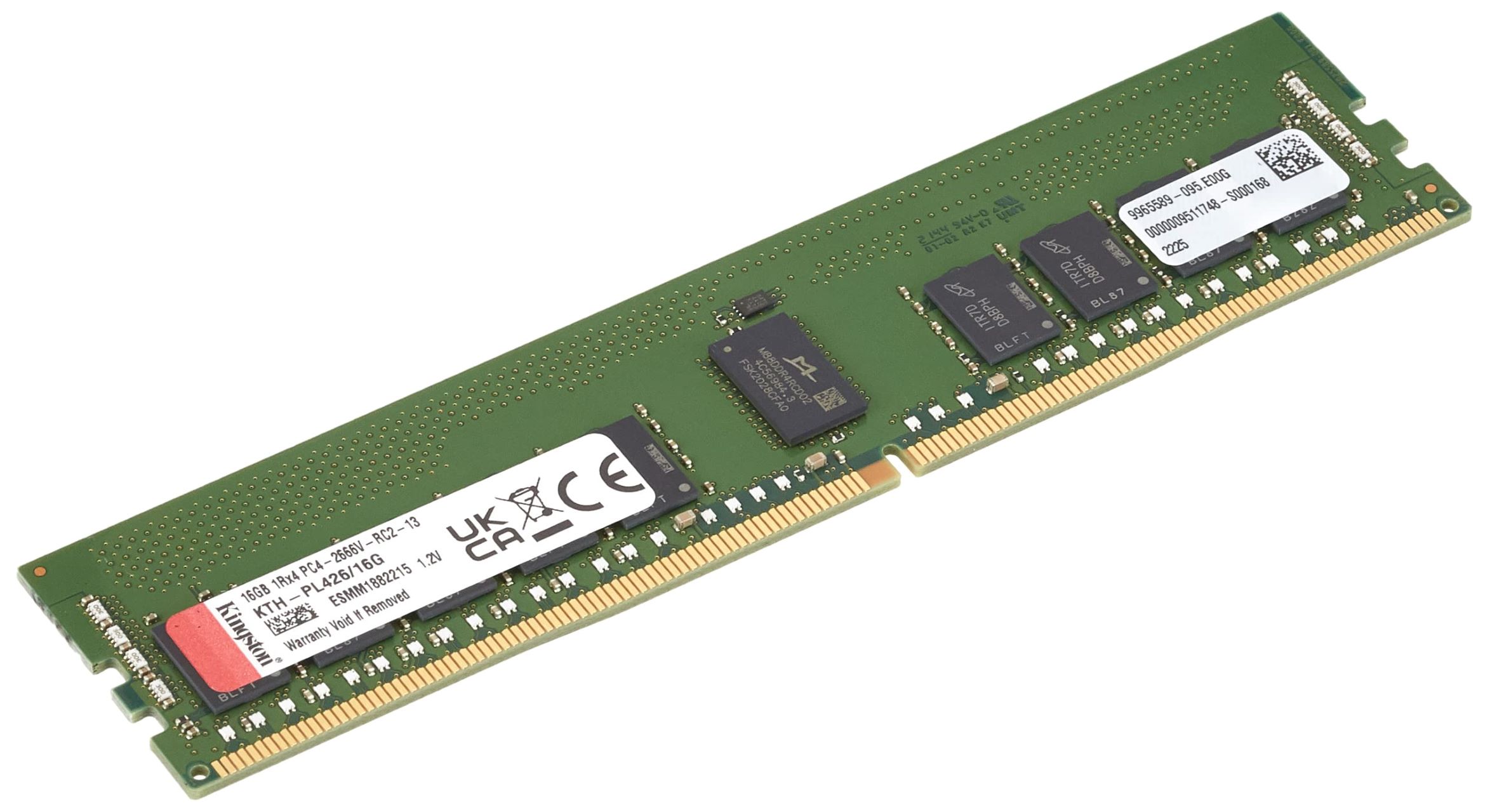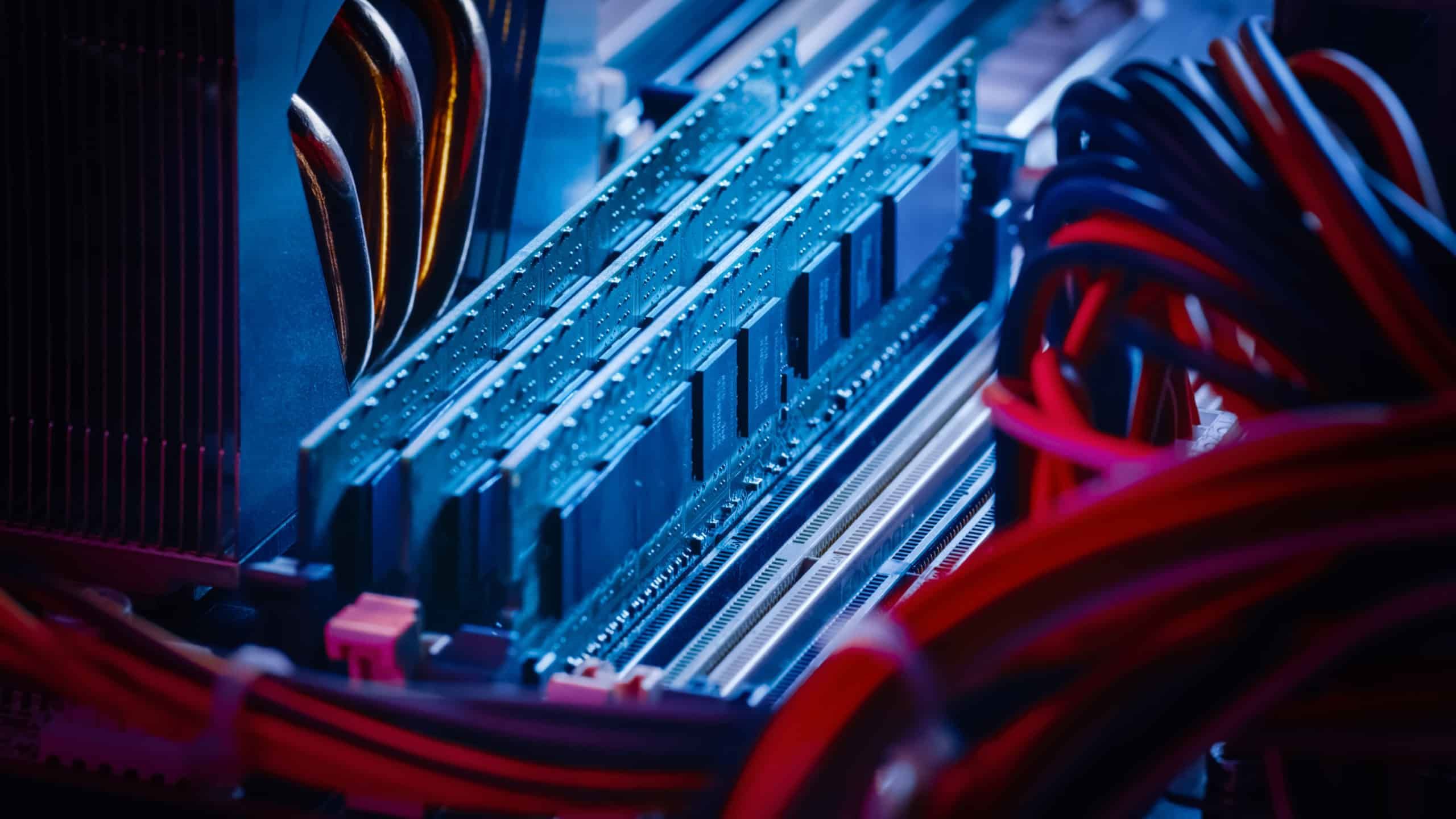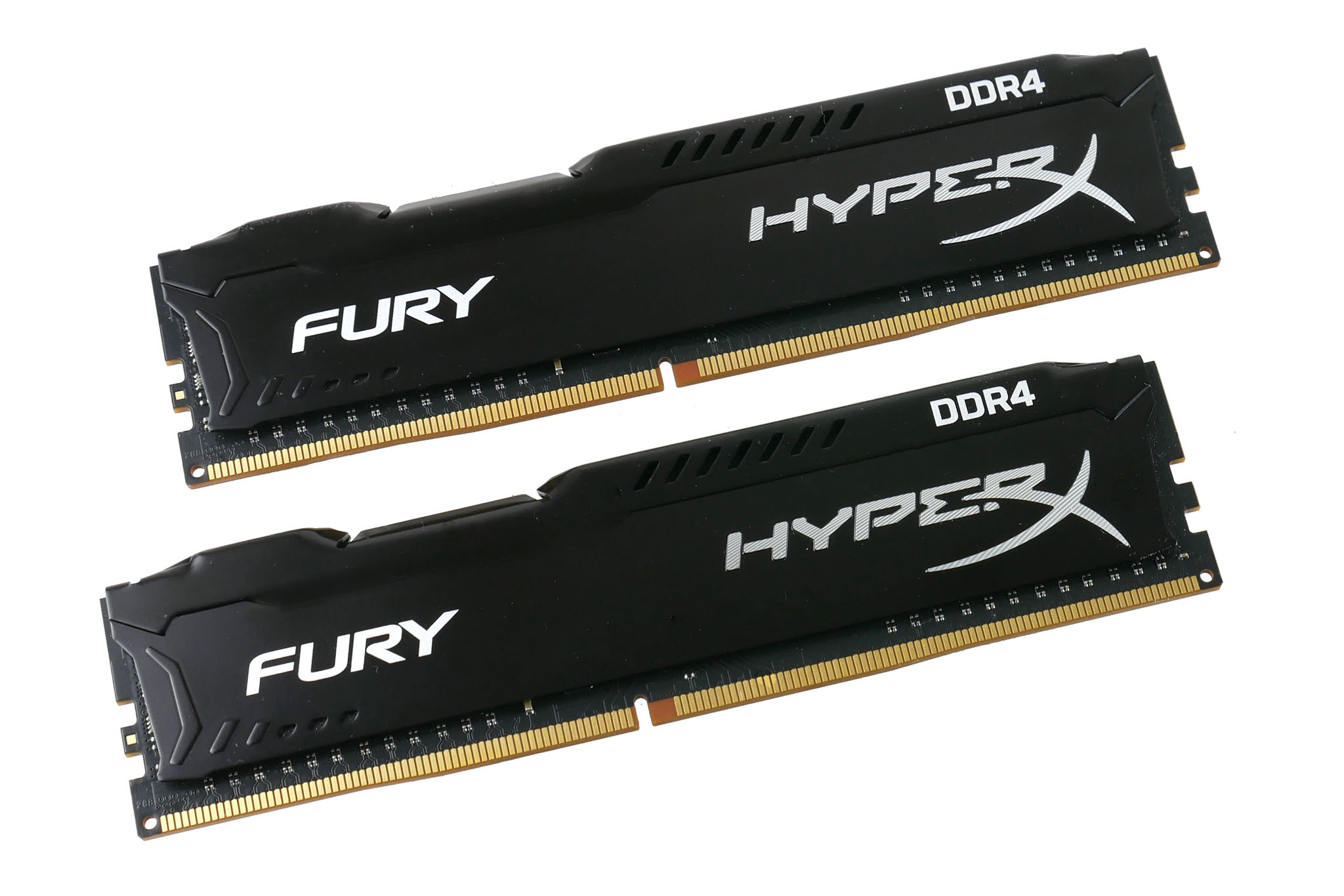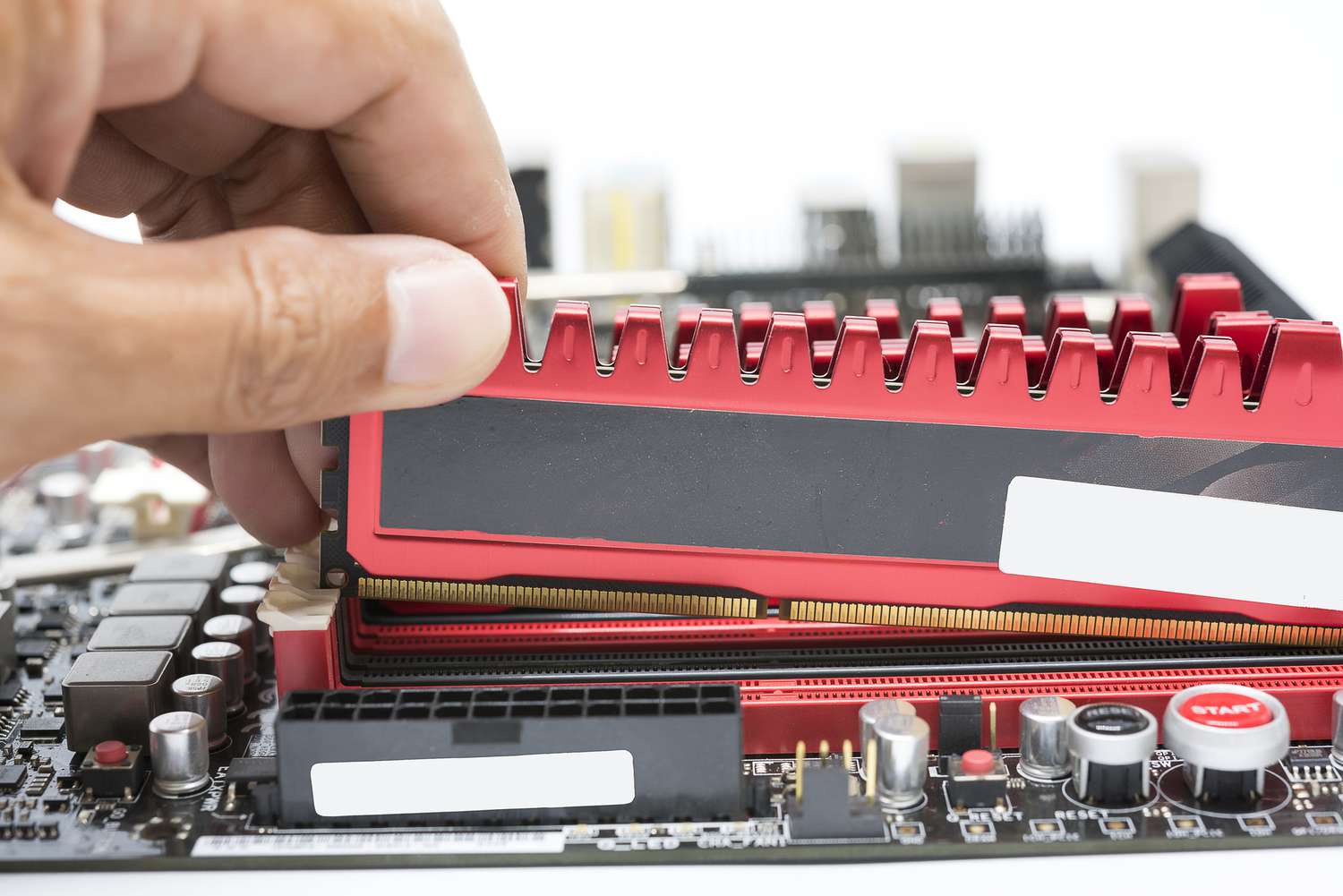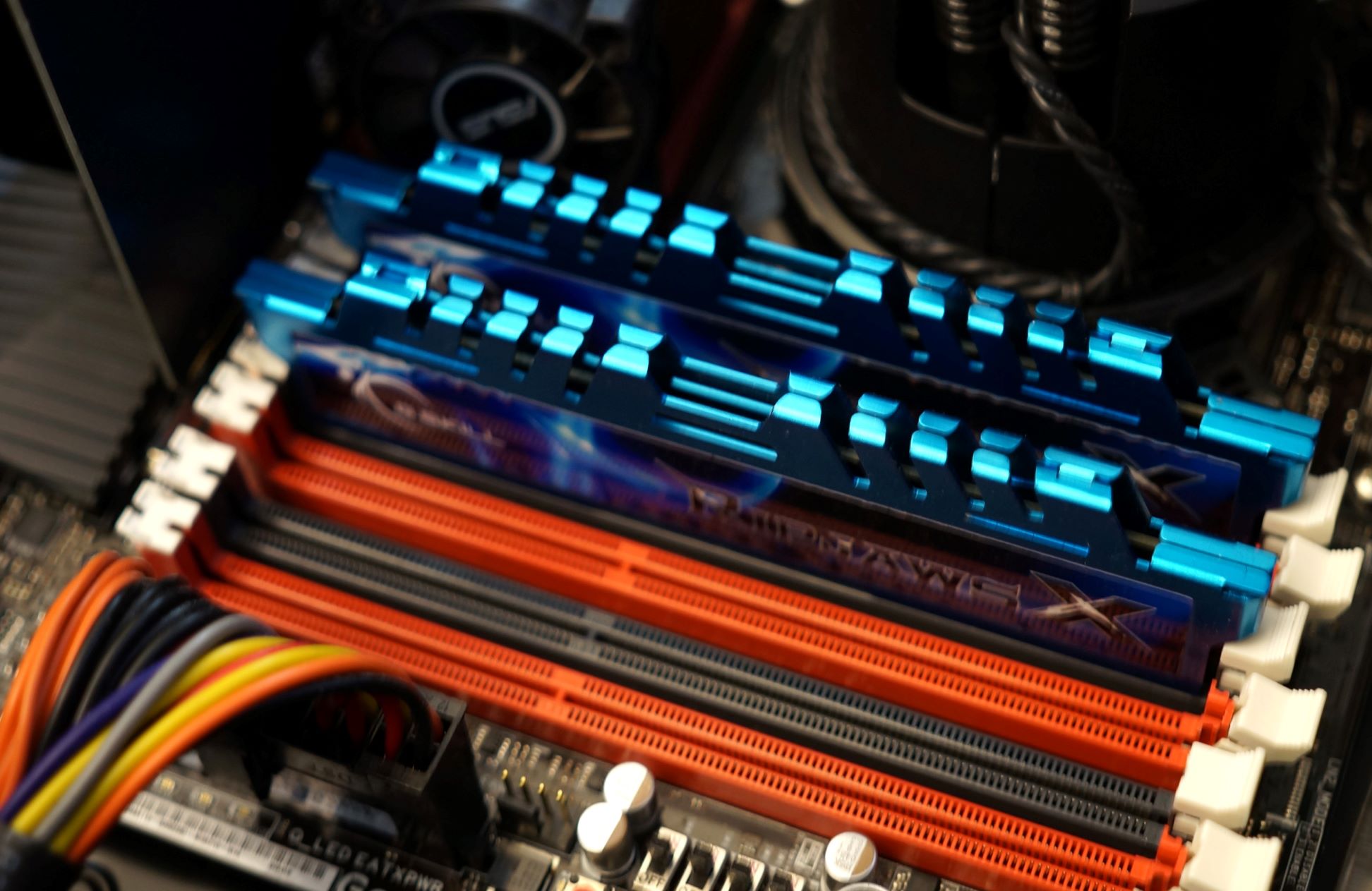Introduction
Welcome to this guide on how to lower latency on your PC. Whether you’re an avid gamer, a professional working remotely, or someone who simply wants a smoother and more responsive online experience, reducing latency is essential. Latency, the delay between a request and a response, can cause frustration and hinder our productivity. In this article, we will explore the various factors that contribute to latency and provide practical tips to help you optimize your PC and network settings.
Latency can have a significant impact on your online activities. When playing online games, even the slightest delay can lead to missed opportunities, decreased reaction time, and an overall poor gaming experience. For professionals relying on video conferencing or working on cloud-based applications, high latency can result in laggy connections, interrupted calls, and impaired productivity. By taking the necessary steps to lower latency on your PC, you can enjoy a seamless and more enjoyable online experience.
In order to effectively reduce latency, it is crucial to understand its underlying causes. Latency can be influenced by a variety of factors, including your internet connection speed, network hardware, and the performance of your PC. By addressing these factors, you can optimize your system and achieve lower latency. In the following sections, we will explore the different strategies you can employ to identify and mitigate latency issues. Keep in mind that the effectiveness of each method may vary depending on your specific setup and network environment.
Now, let’s dive into the world of latency and learn how to optimize your PC to achieve the lowest possible delay.
Understanding Latency
Before we delve into the techniques for reducing latency on your PC, it’s important to have a basic understanding of what latency is and how it affects your online experience. Latency, often referred to as “ping,” is the time it takes for a data packet to travel from your PC to the server and back. It is measured in milliseconds (ms), and lower latency means faster communication between your device and the server.
Several factors contribute to latency, and being aware of them can help you identify and address the root causes. One of the primary factors is the physical distance between your PC and the server you’re connecting to. The farther away the server is, the longer it takes for data to travel back and forth, resulting in higher latency. Additionally, the quality and capacity of your internet connection also play a crucial role. Slow internet speeds, network congestion, and unreliable connections can all increase latency.
Another aspect to consider is the performance of your PC. Your computer’s processing power, RAM, and network adapter can impact the time it takes for data to be transmitted and received. Outdated hardware or software, unnecessary background processes, and driver issues can all contribute to increased latency.
Understanding the various factors that contribute to latency is the first step towards optimizing your system. By identifying the specific areas where latency is being introduced, you can take targeted steps to address them. In the following sections, we will explore different strategies to optimize your internet connection, upgrade your network hardware, adjust network settings, and optimize your PC’s performance. These steps collectively aim to minimize latency and provide you with a smoother and more responsive online experience.
Now that you have a better understanding of latency, let’s move on to assessing your current latency levels to determine if there are any issues that need to be addressed.
Assessing Your Current Latency
Before implementing any changes to improve your PC’s latency, it’s essential to assess your current latency levels to determine if there are any underlying issues. There are several tools and methods available to measure latency accurately.
One of the simplest ways to test latency is by using the “ping” command in the command prompt or terminal. Open the command prompt on your PC and type “ping” followed by the IP address or domain name of the server you want to test. Press Enter, and you will see the results showing the response time for each request. This will give you an idea of your current latency levels.
Another option is to use online latency testing tools that provide more detailed information. These tools typically work by sending test packets to various servers and measuring the response time. Some popular latency testing tools include Ookla’s Speedtest, Fast.com, and PingPlotter. These tools can provide a comprehensive overview of your latency across multiple servers, allowing you to identify any persistent latency issues.
When conducting latency tests, it’s important to perform them under normal usage conditions. Close any unnecessary programs or downloads that might consume bandwidth and potentially artificially inflate latency results. By testing your latency during typical usage scenarios, you can get a more accurate assessment of your current latency levels.
Once you have assessed your current latency, compare the results with the average latency experienced by others. Keep in mind that latency can vary depending on factors such as your geographical location, internet service provider, and the specific server you are testing against. If your latency is significantly higher than the average, it may indicate that there are areas for improvement.
By assessing your current latency levels, you gain valuable insights into the state of your PC’s latency and can determine if any optimizations are necessary. Armed with this information, you can proceed to implement the strategies outlined in the following sections to improve your latency and enhance your online experience.
Optimizing Your Internet Connection
One of the primary factors that affect latency is the quality and speed of your internet connection. By optimizing your internet connection, you can reduce latency and improve the overall performance of your online activities.
Here are some tips to help you optimize your internet connection:
- Choose a reliable ISP: The first step in optimizing your internet connection is to ensure you have a reliable internet service provider (ISP). Research different ISPs in your area and choose one that offers high-speed and stable connections.
- Upgrade your internet plan: If you’re experiencing consistently high latency and slow internet speeds, consider upgrading your internet plan. Look for plans with higher download and upload speeds, as this can significantly reduce latency.
- Use a wired connection: Wi-Fi connections are convenient, but they can introduce additional latency due to interference and signal strength issues. Whenever possible, connect your PC directly to the router using an Ethernet cable for a more stable and lower latency connection.
- Reduce network congestion: If you’re experiencing high latency during peak usage hours, it may be due to network congestion. Limit the number of devices connected to your network and avoid bandwidth-intensive activities, such as large file downloads or streaming, while performing latency-sensitive tasks.
- Update your modem and router firmware: Outdated firmware on your modem and router can cause performance issues and increase latency. Check the manufacturer’s website for firmware updates and apply them to ensure you’re running the latest and most optimized software.
- Optimize DNS settings: Domain Name System (DNS) translates domain names into IP addresses. By using a faster DNS server, you can reduce the time it takes to resolve web addresses and improve latency. You can change your DNS settings in your router or PC’s network adapter settings to use popular DNS servers like Google DNS or Cloudflare DNS.
Following these tips can help optimize your internet connection and reduce latency. However, it’s important to note that external factors such as network congestion and signal interference can still impact latency. If you continue to experience high latency despite optimizing your internet connection, consider exploring other areas, such as upgrading your network hardware or adjusting network settings, which we’ll discuss in the following sections.
Upgrading Your Network Hardware
If you’re experiencing persistent latency issues even after optimizing your internet connection, it may be time to consider upgrading your network hardware. Upgrading your hardware can help improve the overall performance and reduce latency in your network.
Here are some options to consider when upgrading your network hardware:
- Router: Consider upgrading your router to a model that supports the latest Wi-Fi standards, such as Wi-Fi 6 (802.11ax). These routers offer faster speeds, better range, and improved performance, which can help reduce latency. Additionally, routers with multiple antennas or mesh systems can provide better coverage and minimize signal interference.
- Modem: Your modem is the gateway between your home network and your internet service provider. If you’re experiencing latency issues, it might be worth upgrading to a newer model that supports higher data transfer rates and improved stability.
- Network cables: If you’re still using older Ethernet cables, consider upgrading to Cat6 or Cat6a cables. These cables provide better shielding and higher data transfer rates, which can result in lower latency and improved network performance.
- Powerline adapters: If running Ethernet cables throughout your home is not feasible, powerline adapters can be a viable alternative. These devices use your existing electrical wiring to transmit network data, allowing you to establish a wired connection in different rooms without the need for additional cables.
- Network switch: If you have multiple devices connected to your network, a network switch can help improve network performance. A switch enables faster data transmission between devices and reduces network congestion, resulting in lower latency.
When upgrading your network hardware, consider factors such as compatibility with your existing network setup, budget, and the specific needs of your network. Research different products, read customer reviews, and consult with experts or online communities to make informed decisions and choose the hardware that will best suit your requirements.
Upgrading your network hardware can be a worthwhile investment in reducing latency and improving your overall network performance. However, keep in mind that hardware upgrades may not completely eliminate latency issues if other factors, such as network settings or PC performance, are also contributing to the problem. In the next sections, we will explore these areas and provide tips for further reducing latency.
Adjusting Network Settings
In addition to optimizing your internet connection and upgrading your network hardware, adjusting certain network settings can also help reduce latency and improve your overall network performance. By fine-tuning these settings, you can potentially see a significant decrease in latency.
Here are some network settings you can adjust to optimize your network and minimize latency:
- Quality of Service (QoS): QoS settings prioritize certain types of network traffic over others. By configuring your router’s QoS settings, you can prioritize latency-sensitive applications, such as online gaming or video conferencing, for a smoother and more responsive experience.
- Firewall settings: While firewalls are essential for network security, overly stringent settings can contribute to increased latency. Review your firewall settings and customize them to strike a balance between security and network performance.
- Port forwarding: If you frequently use specific applications or services that require incoming connections, such as online gaming or video streaming, configuring port forwarding can help reduce latency by streamlining the communication between your PC and the server.
- Router channel selection: Wi-Fi routers operate on different channels to avoid interference with neighboring networks. By manually selecting the least crowded channel in your area, you can reduce signal interference and optimize your Wi-Fi connection, resulting in lower latency.
- MTU (Maximum Transmission Unit) size: The MTU size dictates the maximum amount of data that can be transmitted in a single network packet. Adjusting the MTU size to an optimal value for your network can improve efficiency and reduce latency.
- Disable background applications: Some applications, especially those that constantly use the internet in the background, can contribute to increased network latency. Identify and disable any unnecessary background applications to free up network resources and reduce latency.
Keep in mind that adjusting network settings requires accessing your router’s administration page, which may vary depending on the manufacturer and model. Refer to the router’s manual or the manufacturer’s website for instructions on accessing and configuring specific settings.
Experimenting with different network settings and finding the optimal configuration for your specific needs may require some trial and error. Monitor the latency levels after each adjustment to gauge the impact on your network performance. By fine-tuning these settings, you can optimize your network and achieve lower latency.
In the next section, we’ll explore ways to optimize your PC’s performance to further reduce latency and enhance your overall online experience.
Optimizing Your PC’s Performance
Alongside optimizing your internet connection and adjusting network settings, optimizing your PC’s performance can greatly contribute to reducing latency and enhancing your overall online experience. By ensuring that your PC is running efficiently, you can minimize unnecessary delays and improve the responsiveness of your system.
Here are some tips to help you optimize your PC’s performance and reduce latency:
- Reduce background processes: Close any unnecessary applications and processes running in the background. These can consume valuable system resources and impact your PC’s performance, leading to increased latency. Use the Task Manager (Ctrl+Shift+Esc) to identify and terminate any non-essential processes.
- Update drivers: Outdated or faulty device drivers can cause performance issues and increase latency. Regularly update your drivers, especially those related to your network adapter, graphics card, and motherboard, to ensure optimal performance and compatibility with the latest software.
- Minimize startup programs: Disable or remove unnecessary programs that launch automatically when your PC starts up. These programs can put a strain on system resources and slow down your PC, leading to increased latency. Use the Task Manager or the System Configuration utility (msconfig) to manage startup programs.
- Manage power settings: Adjust your power settings to prioritize performance over energy conservation. In the Power Options settings, select a high-performance power plan to ensure that your PC operates at its maximum potential, minimizing delays and latency.
- Uninstall unnecessary software: Review your installed programs and uninstall any software that you no longer use or need. Accumulated software can not only take up valuable disk space but also contribute to background processes and increase latency.
- Scan for malware: Malware infections can significantly impact your PC’s performance and introduce additional latency. Regularly scan your PC with reputable antivirus software to detect and remove any malware that may be causing performance issues.
- Upgrade hardware components: If your PC’s hardware is outdated or struggling to keep up with modern demands, consider upgrading components such as the processor, RAM, or storage drive. These upgrades can enhance your PC’s performance and reduce latency during resource-intensive tasks.
Implementing these performance optimization tips can help minimize latency and ensure that your PC operates at its best. Regular maintenance and monitoring of your PC’s performance are also essential. By keeping your system clean, updated, and running smoothly, you can enjoy a more responsive and latency-free computing experience.
In the next section, we’ll discuss additional measures to minimize interference and further reduce latency in your network.
Reducing Background Processes
One effective way to optimize your PC’s performance and reduce latency is by minimizing unnecessary background processes. These processes run in the background and consume valuable system resources, impacting your PC’s overall responsiveness and increasing latency.
Here are some strategies to help you reduce background processes and improve your PC’s performance:
- Identify resource-intensive processes: Open the Task Manager (Ctrl+Shift+Esc) and review the list of running processes and their resource usage. Look for processes that consume a significant amount of CPU, memory, or disk usage. These processes are likely candidates for termination or further investigation.
- Close unused applications: Close any applications that you’re not actively using. This includes web browsers with multiple tabs open, productivity software, and media players. By reducing the number of active applications, you can free up system resources and minimize latency.
- Disable startup programs: Many applications have a tendency to launch automatically when your PC starts up. Check the Startup tab in the Task Manager or the Startup section in the System Configuration utility (msconfig) and disable any programs that you don’t need to start with your PC. This will prevent unnecessary background processes from running and reduce latency.
- Manage system tray icons: Review the icons in your system tray (usually located at the bottom-right corner of the screen) and determine which applications are running in the background. Right-click on the unnecessary icons and either exit the programs or check their settings to prevent them from running in the background.
- Use a lightweight antivirus software: Some antivirus programs can consume a substantial amount of system resources, leading to increased latency. Consider using a lightweight and efficient antivirus software that provides adequate protection without putting a strain on your PC’s performance.
- Optimize browser extensions: If you use a web browser with multiple extensions installed, review them and disable or remove any unnecessary ones. Extensions can consume memory and CPU resources, impacting your browsing speed and overall PC performance.
- Regularly clean up your PC: Perform routine maintenance tasks to keep your PC running smoothly. This includes deleting temporary files, clearing browser cache, and running disk cleanup utilities. A clutter-free system will experience fewer background processes and improved performance.
Reducing background processes is an effective way to optimize your PC’s performance and minimize latency. By focusing system resources on the tasks you actively undertake, you can enjoy a more responsive and latency-free computing experience.
In the next section, we’ll discuss the importance of updating drivers and how it can contribute to reducing latency.
Updating Drivers
Updating drivers is a crucial step in optimizing your PC’s performance and reducing latency. Drivers act as a bridge between your hardware components and the operating system, ensuring smooth communication and efficient operation. Outdated or faulty drivers can cause performance issues and increase latency in your system.
Here’s why updating drivers is important and how it can help minimize latency:
Improved Compatibility: Driver updates often include bug fixes and optimizations that enhance compatibility with the latest software and operating system updates. By keeping your drivers up to date, you ensure that your hardware components work seamlessly with the rest of your system, minimizing latency and improving performance.
Better Performance: Driver updates can include performance improvements that optimize the usage of system resources. Updated drivers can take advantage of new features and enhancements, resulting in smoother operation and reduced latency. Graphics card drivers, in particular, can significantly impact the performance of graphics-intensive tasks, such as gaming and video rendering.
Stability and Reliability: Outdated or faulty drivers can lead to system crashes, freezes, and unexpected errors. By updating your drivers, you ensure that your hardware operates in a stable and reliable manner, resulting in fewer disruptions and reduced latency in your system.
Security Enhancements: Driver updates often include security patches that address vulnerabilities and protect your system from potential threats. Keeping your drivers up to date ensures that your system is protected and reduces the risk of malware or other security issues that can impact performance and introduce additional latency.
To update your drivers, you can follow these steps:
- Identify the specific hardware components: Use device manager or third-party tools to identify the specific hardware components in your system that require driver updates.
- Visit the manufacturer’s website: Visit the website of the hardware component’s manufacturer. Look for the “Support” or “Downloads” section to find the latest driver updates for your specific model.
- Download and install the latest drivers: Download the appropriate drivers for your hardware component and install them following the manufacturer’s instructions. Make sure to download drivers that are compatible with your operating system version.
- Regularly check for updates: Driver updates are often released periodically, so it’s important to check for updates regularly to ensure you have the latest versions installed. Some drivers can also be set to automatically update through software utilities provided by the manufacturers.
Updating drivers is an essential step in reducing latency and optimizing your PC’s performance. By keeping your drivers up to date, you ensure compatibility, improve performance, enhance stability, and mitigate security risks, all of which contribute to a smoother and more responsive computing experience.
In the next section, we’ll discuss the advantages of using an Ethernet connection instead of relying solely on Wi-Fi, and how it can help reduce latency.
Using Ethernet Instead of Wi-Fi
While Wi-Fi offers convenience and flexibility, using an Ethernet connection can significantly reduce latency and improve the stability of your network connection. Wi-Fi signals can be affected by various factors, such as distance, interference, and signal congestion, all of which can introduce latency into your network.
Here are some advantages of using an Ethernet connection instead of relying solely on Wi-Fi:
1. Lower Latency: Ethernet connections provide a direct wired connection between your PC and the network, resulting in lower latency compared to Wi-Fi. This direct connection eliminates the potential signal interference and latency associated with wireless connections, leading to a more reliable and responsive network experience.
2. Stability and Consistency: Wi-Fi signals can be affected by physical obstructions, signal interference from nearby devices or appliances, and network congestion. Ethernet connections offer a more stable and consistent connection since they are not susceptible to these factors. This stability means you are less likely to experience sudden drops in connection or fluctuations in latency.
3. Higher Speeds: Ethernet connections can offer higher network speeds compared to Wi-Fi. If you have a high-speed internet plan, utilizing an Ethernet connection allows you to take full advantage of the available bandwidth, minimizing any potential bottleneck that could increase latency.
4. Reduced Network Congestion: Wi-Fi networks can be overcrowded, especially in densely populated areas or in environments with multiple Wi-Fi devices. This congestion can lead to increased latency as devices compete for limited network resources. By using an Ethernet connection, you can avoid this congestion and experience smoother and more responsive network performance.
5. Enhanced Security: Ethernet connections are generally considered more secure than Wi-Fi connections. While modern Wi-Fi networks offer encryption and security protocols, Ethernet connections are inherently more difficult to intercept or hack into. This added security can provide peace of mind and further contribute to a reliable and secure network experience.
While Ethernet connections offer numerous benefits, it’s important to consider factors such as physical accessibility and convenience. If connecting your PC directly to the router via an Ethernet cable is not feasible or practical, consider alternatives such as powerline adapters that utilize your home’s electrical wiring to transmit network signals.
By utilizing an Ethernet connection instead of relying solely on Wi-Fi, you can enjoy a more stable, faster, and lower latency network experience. This is particularly important for latency-sensitive activities such as online gaming, video conferencing, and downloading large files.
In the following section, we’ll explore ways to minimize interference and optimize your network for reduced latency.
Minimizing Interference
Interference can significantly impact your network performance and introduce latency. By minimizing interference, you can improve the stability and speed of your network connection, resulting in a smoother and more responsive online experience.
Here are some strategies to help you minimize interference and optimize your network:
- Position your router wisely: Place your router in a central location, away from physical obstructions such as walls, furniture, or appliances. This allows for better signal distribution and reduces the chances of interference.
- Switch to a less crowded channel: Wi-Fi routers operate on different channels. To avoid interference from nearby networks, use a tool like Wi-Fi analyzer to identify the least congested channel and manually configure your router to use that channel.
- Keep away from other electronic devices: Appliances such as cordless phones, baby monitors, and microwave ovens can interfere with your Wi-Fi signal. Keep your router away from these devices to minimize interference.
- Use devices that support the 5 GHz band: The 5 GHz band offers less congestion compared to the 2.4 GHz band, which is commonly used by Wi-Fi networks. If your devices support the 5 GHz band, switch to that frequency for a less crowded and more reliable connection.
- Consider Ethernet over Powerline: Powerline adapters allow you to use your home’s electrical wiring to transmit network signals. This can be particularly useful in scenarios where Wi-Fi signals are weak or interference is severe, providing a more stable and interference-free connection.
- Turn off nearby appliances: Certain devices, such as cordless phones or microwave ovens, can emit electromagnetic signals that interfere with Wi-Fi signals. If you notice interference, try turning off or moving these devices away from your router.
- Upgrade to a dual-band router: If you’re still using a single-band Wi-Fi router, consider upgrading to a dual-band router that supports both 2.4 GHz and 5 GHz. This allows you to connect compatible devices to the less crowded 5 GHz band, reducing the chances of interference.
- Use Wi-Fi extenders or mesh systems: If you have a large house or office space with areas of weak Wi-Fi coverage, consider using Wi-Fi extenders or a mesh network system. These devices amplify and distribute the Wi-Fi signal, ensuring better coverage and reducing interference-related latency.
By implementing these strategies, you can minimize interference and optimize your network for reduced latency. Experiment with different solutions to find the approach that works best for your specific environment and network setup.
In the next section, we’ll summarize the key points covered in this guide and provide a final word of advice on reducing latency on your PC.
Conclusion
Reducing latency on your PC is essential for a smoother and more responsive online experience, whether you’re a gamer, remote worker, or simply someone who wants to optimize their internet connection. Throughout this guide, we’ve explored various strategies to help lower latency and improve network performance.
We started by understanding what latency is and the factors that contribute to its presence in our network. By assessing our current latency levels, we gained insights into potential issues that needed to be addressed. We then explored ways to optimize our internet connection, upgrade network hardware, adjust network settings, and optimize our PC’s performance.
Optimizing your internet connection involves choosing a reliable ISP, upgrading your internet plan, using a wired connection instead of Wi-Fi, reducing network congestion, updating firmware, and optimizing DNS settings. Upgrading network hardware can lead to a more stable and faster connection, while adjusting network settings, such as QoS, firewall, and port forwarding, can help minimize latency.
Optimizing your PC’s performance involves reducing background processes, updating drivers, managing power settings, uninstalling unnecessary software, and scanning for malware. Lastly, we discussed the advantages of using an Ethernet connection and how to minimize interference to further reduce latency.
Remember, each network setup is unique, and the effectiveness of these strategies may vary. It’s important to find the right combination of optimizations that works best for your specific environment.
By implementing these strategies, you can significantly reduce latency, enhance network performance, and ensure a more enjoyable online experience. Keep in mind that reducing latency requires ongoing maintenance and periodic checks to ensure your system remains optimized. Regularly updating drivers and firmware, monitoring background processes, and staying vigilant for potential interference will help maintain optimal performance over time.
With the information and guidance provided in this guide, you’re now equipped with the knowledge to tackle latency issues and optimize your PC for a smoother online experience.







